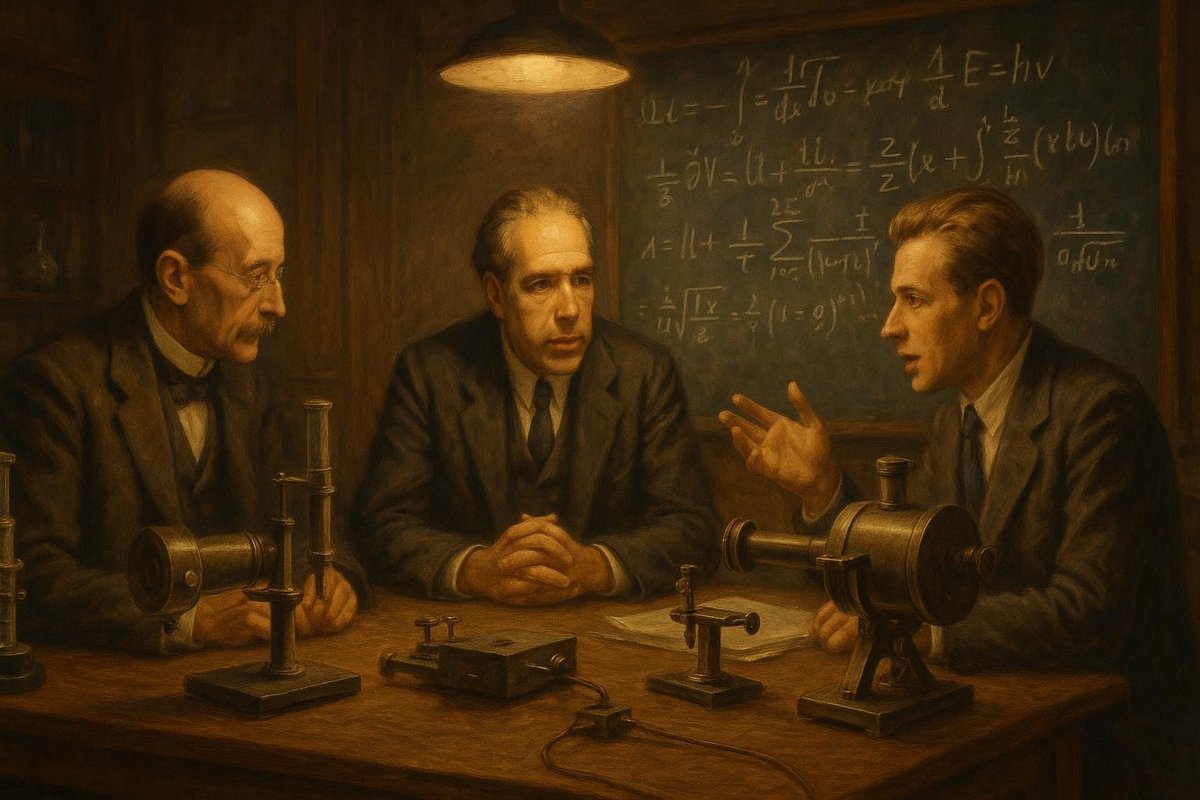
The Birth of Quantum Mechanics: A World in Question
Have you ever wondered why a heated object changes color as it gets hotter? This seemingly simple question puzzled scientists at the dawn of the 20th century. Enter Max Planck, Niels Bohr, and Werner Heisenberg—three brilliant minds who dared to explore the hidden realities of the atomic world. Their journey wasn’t just a scientific venture; it was an intellectual revolution that redefined our understanding of nature.
Before their revolutionary insights, physics was dominated by classical theories. These theories couldn’t explain the strange behaviors observed at the atomic scale. The need for a new perspective was palpable, especially as technological advancements demanded deeper understanding. The stage was set for a quantum revolution, with Planck, Bohr, and Heisenberg leading the charge.
Problematizing the Subatomic World
To understand how groundbreaking their work was, let’s dive into the problems they faced:
- Planck’s Quandary: Max Planck, while investigating black body radiation, stumbled upon a major conundrum. Classical physics predicted infinite energy emissions—a paradox known as the ultraviolet catastrophe.
- Bohr’s Atom: Niels Bohr was intrigued by the atomic model. How could electrons orbit the nucleus without spiraling inward?
- Heisenberg’s Uncertainty: Werner Heisenberg faced the perplexing issue of measurement accuracy. How could one predict both the position and momentum of a particle accurately?
These puzzles weren’t just scientific—they were philosophical, challenging the very way scientists thought about reality. Planck was methodical and cautious, famously stating, “Science progresses one funeral at a time,” indicating his belief in gradual acceptance of new ideas.
The Quantum Leap: A Theoretical Breakthrough
Breaking away from classical constraints, these scientists introduced groundbreaking theories:
- Planck’s Constant: Planck proposed the quantization of energy, suggesting energy is emitted in discrete packets, or ‘quanta’. This was a revolutionary departure from classical continuity.
- Bohr’s Model: Bohr, inspired by Rutherford’s model, introduced quantized electron orbits, explaining atomic emission spectra.
- Heisenberg’s Principle: Heisenberg formulated the Uncertainty Principle, asserting that precise measurement of certain pairs of observable variables is impossible.
These theories were bold, requiring leaps of faith and imagination. Heisenberg wrote, “It was about finding the right language to articulate nature’s laws.” The trio’s intellectual bravery laid the groundwork for modern quantum mechanics.
Proving the Unseen: Evidence and Experimentation
These theoretical advances were supported by compelling evidence:
- Photoelectric Effect: Albert Einstein’s explanation of the photoelectric effect validated Planck’s quantum theory, showing light’s particle-like behavior.
- Atomic Spectra: Bohr’s model accurately predicted spectral lines, corroborating his quantum leaps.
- Diffraction Experiments: Davisson and Germer’s electron diffraction experiment confirmed wave-particle duality, supporting Heisenberg’s ideas.
Their theories weren’t just abstract constructs; they were testable, observable phenomena. With each experiment, the atomic and subatomic worlds became less mysterious, more quantifiable.
Legacy of Quantum Mechanics: Modern Relevance
Today, quantum mechanics is the backbone of modern technology. From semiconductors to MRI machines, its impact is profound:
- Computing Revolution: Quantum computers promise to solve problems beyond the reach of classical machines.
- Medical Advances: Technologies like laser surgery and medical imaging owe their existence to quantum principles.
- Philosophical Implications: The philosophical debates around quantum mechanics—free will, reality, and observation—continue to inspire thinkers.
Their work reshaped our worldview, demonstrating the power of questioning and the courage to embrace uncertainty. As Niels Bohr famously quipped, “Anyone who is not shocked by quantum theory has not understood it.” Their intellectual courage continues to fuel scientific inquiry.
Fuel Someone Else’s Curiosity
If this exploration of the quantum pioneers sparked your interest, why not share it with someone else? The fascination with how the universe operates at its most fundamental level is contagious. Spread the word, ignite a conversation, and perhaps inspire the next thinker who will reshape our understanding of reality.

Leave a Reply